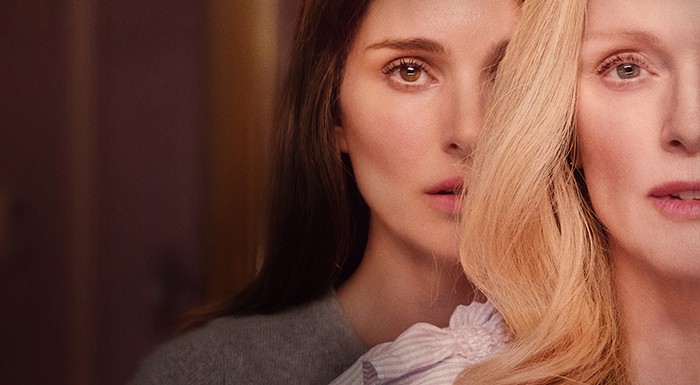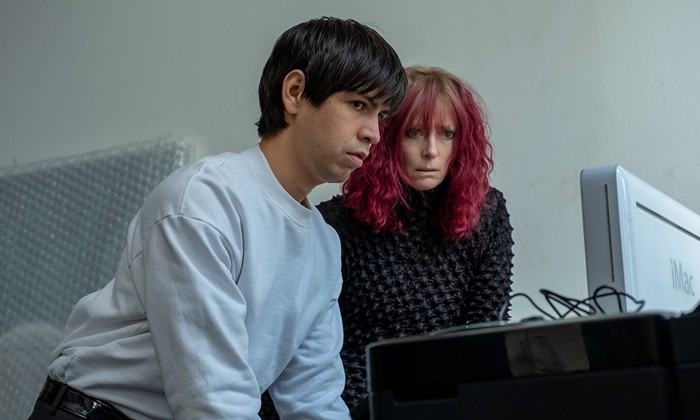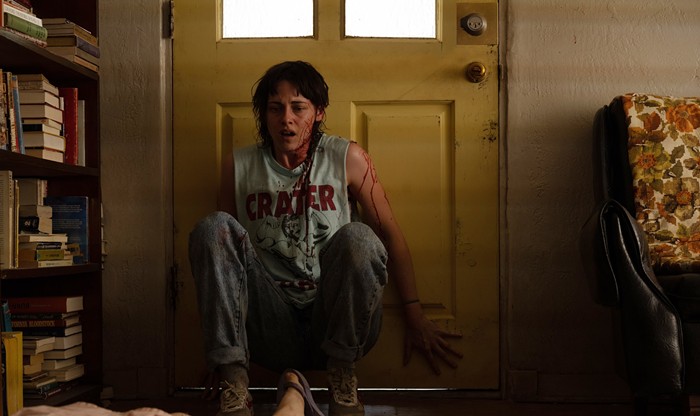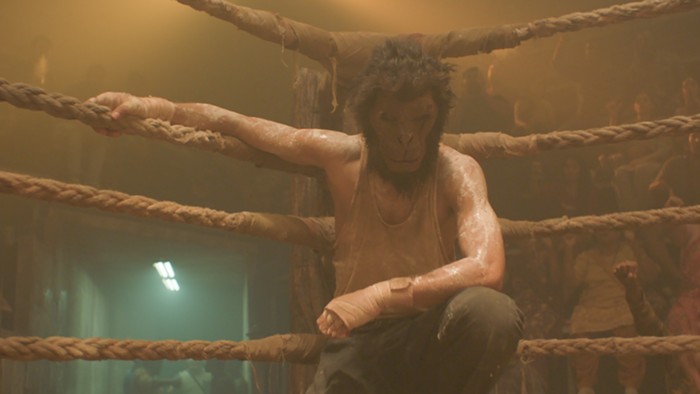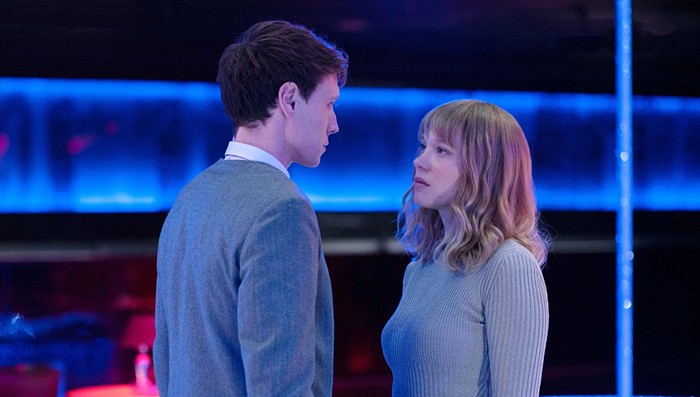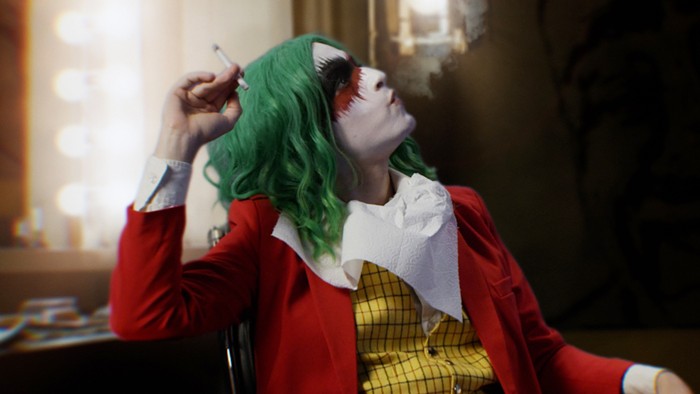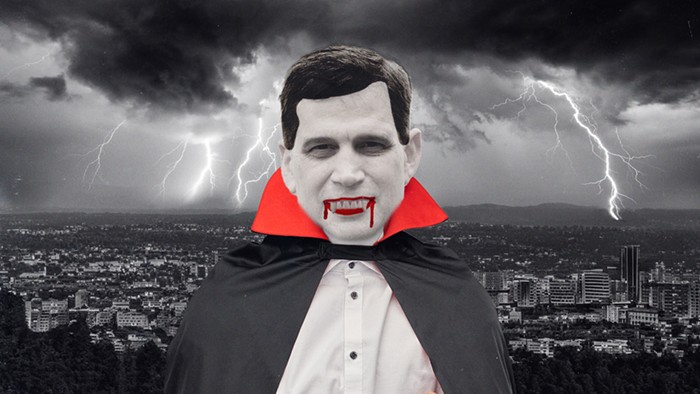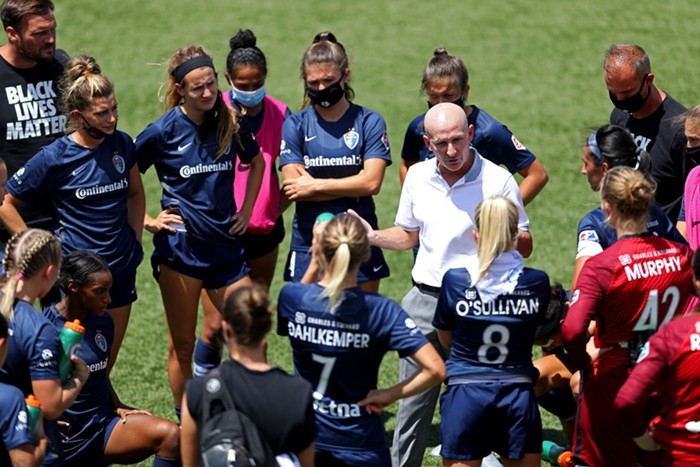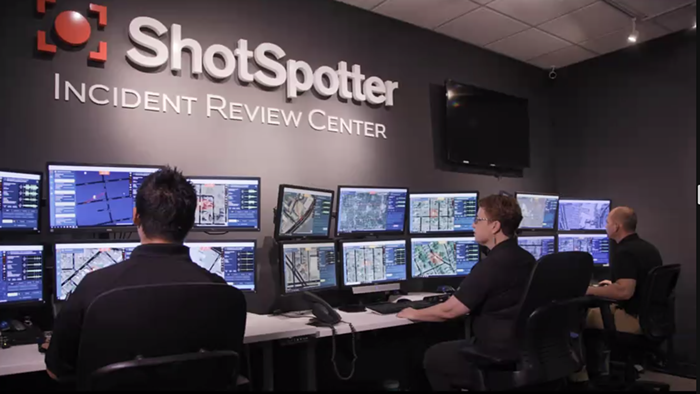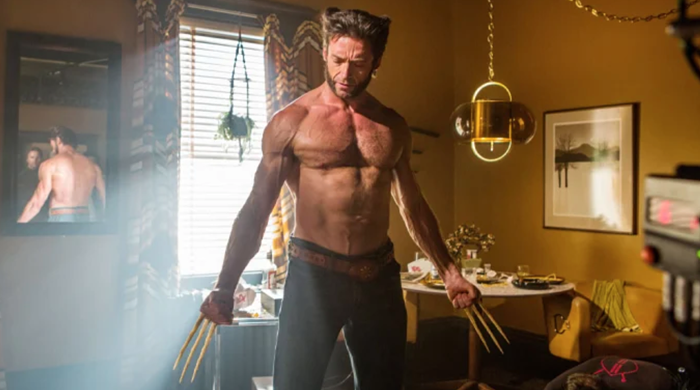WE’RE LIVING in a golden age of horror movies that we’re not allowed to call horror movies. Crimson Peak was a “gothic romance.” The Witch was... whatever The Witch was. While the trailers seemed intent to sell those films as horror, neither functioned very well if you went into the theater with conventional genre expectations. And while I usually find that sort of categorical groundskeeping pretty obnoxious (and I’m pretty sure The Witch WAS a horror movie), I’m here to tell you that—no matter how it may first appear—A Cure for Wellness is not a horror movie.
Don’t get me wrong—the synopsis certainly makes it seem like one! Callow young stockbroker Lockhart (Dane DeHaan) is dispatched on an errand by his employers to a mysterious geriatric clinic in an extremely sinister Swiss castle. Said clinic is run by an unsettlingly European doctor (Jason Isaacs), who also may or may not be a Dracula. As one might expect, bad things happen. But as one might not expect, each of A Cure for Wellness’ apparently disparate components—stockbroker, old people, Dracula castle—is given equal attention. So yes, maybe there are hundreds of creepy eels lurking beneath the surface of the clinic’s pond. But there are also a lot of water-aerobics scenes.
While Lockhart is kind of a shit-ass Master of the Universe when we first meet him, he’s never truly deserving of the indignities he suffers. So right out the gate, we’ve lost the two emotional hooks that horror movies typically lean on with their protagonists, the first being “I sure hope they’ll be okay!” and the second being “I sure hope they get what’s coming to them!” Rather, it’s from Lockhart’s emotional response to his mental and physical degradation that the movie draws much of its intensity. If there’s a primary emotional response here, it’s not fear—it’s a growing sense of inward-facing revulsion.
Director Gore Verbinski doesn’t really seem interested in scaring us, either, despite the whole “Haunted Eel Castle playset” he meticulously constructs in the film’s first acts. The thing about Verbinski is that he made Disney literal billions of dollars with the Pirates of the Caribbean franchise, so every once in a while he gets to wander off and make offbeat, unexpected movies like this one (he also directed Rango and The Weather Man, if you’re keeping score). Verbinski’s passion projects are always deeply bizarre, but despite being scattershot in their approach, they always manage to land a surprising number of solid, emotionally true moments. And none of them play by the established rules of their ostensible genres. Sure, there’s some Dracula in the DNA for A Cure for Wellness, but there are also traits from Eyes Without a Face, Chinatown, and American Psycho. Wellness is just as concerned with the inevitability of old age and the unavoidable moral compromises of late-stage capitalism and as it is with periodic spurts of bodily fluids.
But although Wellness has many easily identifiable structural influences, its visuals are remarkable and unique: Beautifully composed landscape and architectural shots alternate with grimy body horror and unexpected POV angles. Verbinski and cinematographer Bojan Bazelli—who previously worked with Verbinski on The Lone Ranger and The Ring—seem as fascinated by the picturesque Swiss countryside as they are with pale bodies in hospital linens and mid-century industrial equipment. (Oh, and the viscera splattering on that mid-century industrial equipment.) It’s aesthetic whiplash piled onto an already complex thematic gumbo. That’s not a bad thing, necessarily, but there are a LOT of ideas on the table here.
Verbinski’s focus might be too diffuse for Fangoria-collecting purists, but for the rest of us, Wellness is worth seeing. Regardless of how you want to describe it—or what genre you think it fits into—A Cure for Wellness is haunting, gorgeous, and masterfully disgusting. In a strangely subtle way, it’s one the weirdest films I’ve seen in ages. And it’s definitely the one I’ve thought about the longest after it ended.
